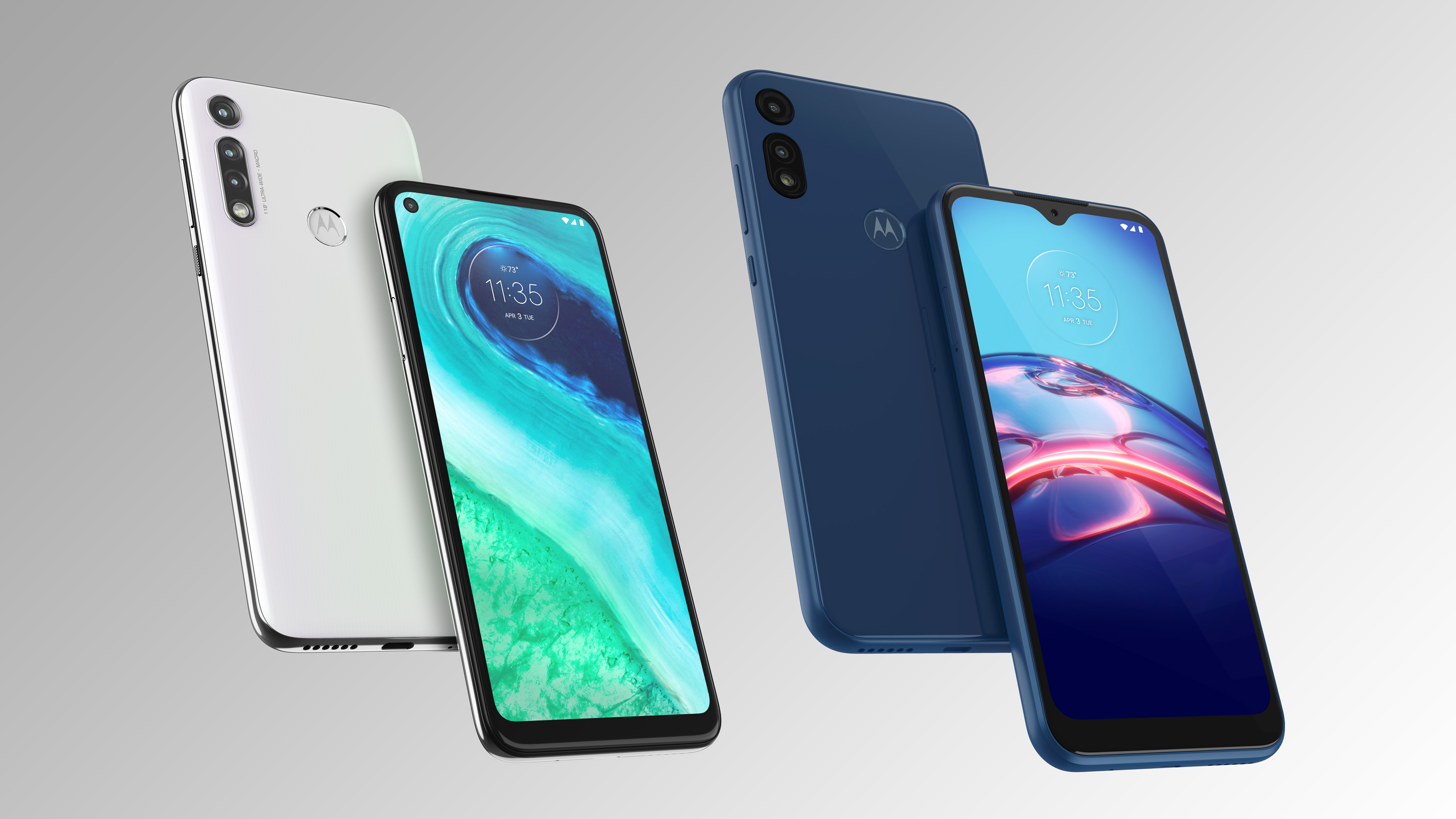New Moto G Fast, Moto E make the iPhone SE look expensive
Looking for a great cheap phone under $200? The Moto G Fast and Moto E could be your answer

These days, we consider the Moto G Power to be the best cheap phone you can buy for less than $250 because it offers exceptional battery life, good-enough performance and photography and compatibility with any cellular network.
Nevertheless, Motorola evidently wasn’t satisfied with the value of its latest budget handset, because the company’s now putting out an even cheaper model that still looks to carry over most of what we loved about the Power.
- The best unlocked phones: Handsets you can take to any carrier
- Google Pixel 4a: Everything we know about the next cheap Pixel
- Just In: Samsung Galaxy Note 20 release date just leaked
Motorola's latest budget phone is called the Moto G Fast. Coming out July 12 for $199 unlocked and via Boost Mobile, the 6.4-inch Moto G Fast has the very same processor as the Moto G Power and Moto G Stylus, but packs a 4,000-mAh battery compared to the Power’s 5,000-mAh power pack. It also has 3GB of RAM rather than 4GB, though Motorola has been able to bring the Power’s triple-lens rear camera to the Fast, so the differences are actually pretty slight in the grand scheme of things.
The Moto G Fast will be accompanied by the new 6.2-inch Moto E for 2020 for $149. Inside this model is a Snapdragon 632 processor supported by 2GB of RAM, a 3,550-mAh battery and a dual-lens rear camera that combines a 13-MP main sensor with a 2-MP depth sensor.
Like the Moto G Fast, the Moto E will be available unlocked, though it will also be sold through a range of discount carriers, including Metro by T-Mobile, Boost Mobile, U.S. Cellular, Xfinity Mobile, Republic Wireless and Verizon's prepaid service. You can pre-order either phone from Best Buy, Amazon, Walmart and other major retailers starting today.
Moto G Fast and Moto E specs
| Model | Moto G Fast | Moto E |
|---|---|---|
| Starting Price | $199 | $149 |
| Screen | 6.4-inch LCD (1560x720) | 6.2-inch LCD (1520x720) |
| CPU | Snapdragon 665 | Snapdragon 632 |
| Storage | 32GB; expandable up to 512GB | 32GB; expandable up to 512GB |
| Storage | 3GB | 2GB |
| Battery | 4,000 mAh | 3,550 mAh |
| Rear Camera | 16MP main (ƒ/1.7); 8MP ultrawide (ƒ/2.2); 2MP macro (ƒ/2.2) | 13MP main (ƒ/2.0); 2MP depth (ƒ/2.2) |
| Front Camera | 8MP (ƒ/2.0) | 5MP (ƒ/2.0) |
| Colors | Pearl White | Midnight Blue, Champagne Pink |
| Weight | 6.68 ounces | 6.52 ounces |
| Dimensions | 6.37 x 2.98 x 0.35 inches | 6.29 x 3.01 x 0.34 inches |
The Moto G Fast is the device we’re primarily excited to test, though. Although the Moto G Power really won us over with its unbelievable longevity on a charge — lasting 16 hours and 10 minutes in Tom’s Guide’s custom battery test — the rest of the handset is pretty solid too. The display is satisfactorily bright, performance is sprightly enough to handle ordinary phone tasks, the photos it takes aren’t that much worse than what you’d get from, say, the Pixel 3a, and what few software shortcuts and enhancements Motorola’s added to Android 10 are genuinely useful.
If the Moto G Fast can deliver on all of those fronts that the Power excelled at —albeit with a slight hit to battery life — it could be the perfect phone under $200. It’s worth pointing out that the Moto G Stylus also has a 4,000-mAh battery, and with it, that device lasted 12 hours and 13 minutes in the same battery test — still good enough to land in the rankings for best phone battery life.
Get instant access to breaking news, the hottest reviews, great deals and helpful tips.
On the even less-expensive side of things, the Moto E will take the fight to Nokia’s range of cheap handsets. One device we tested nearly a year ago, the $189 Nokia 4.2, sported a sensible, cute design but came equipped with a lower-spec chip than what you’ll find in the Moto E, and the battery life was nothing to celebrate, either.
So far this year, we’ve seen Motorola rise up to take back the cheap phone mantle with the Moto G Power and, to a lesser extent, the Moto G Stylus. The Moto G Fast and Moto E will prove whether the company can keep it. Look forward to reviews of both handsets in the coming weeks.
Adam Ismail is a staff writer at Jalopnik and previously worked on Tom's Guide covering smartphones, car tech and gaming. His love for all things mobile began with the original Motorola Droid; since then he’s owned a variety of Android and iOS-powered handsets, refusing to stay loyal to one platform. His work has also appeared on Digital Trends and GTPlanet. When he’s not fiddling with the latest devices, he’s at an indie pop show, recording a podcast or playing Sega Dreamcast.
